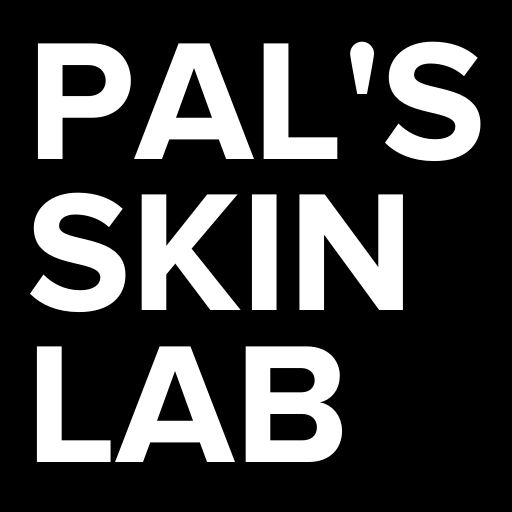AHAs: Your Secret to Glowing Skin
Are you looking to achieve that enviable, radiant skin glow? If so, you're in for a treat because we're about to unveil the magic of Alpha Hydroxy Acids, or AHAs. These chemical exfoliants are like a breath of fresh air for your skin. In this friendly and informative guide, we'll walk you through what AHAs are, how they work, who can benefit from them, and how to make them a part of your skincare routine.
1. What are AHAs?
Let's start with the basics. Alpha hydroxy acids, or AHAs, are a group of compounds that work wonders for your skin. Their primary role is to gently exfoliate and remove the top layer of dead skin cells, revealing the fresher, more youthful skin beneath. Among the various types of AHAs, glycolic acid is the standout performer. It's derived from sugar cane and boasts tiny molecules that your skin readily absorbs. One key distinction: AHAs are water-soluble, unlike BHA, which is oil-soluble.
2. How do they work?
Here's the secret sauce. AHAs facilitate a natural process called desquamation, where old skin cells shed, and fresh ones rise to the surface. In a healthy stratum corneum, this happens about every 2 to 3 weeks. But sometimes, factors like aging, environmental stress, and dehydration can slow things down, leaving you with rough, scaly, and dull skin.AHAs, including trusty glycolic acid, break the bonds between dead skin cells, giving your skin a boost in the exfoliation department. But that's not all. These little wonders also put a damper on tyrosinase, the enzyme responsible for melanin production and those pesky dark spots. Plus, consistent use of AHAs can kickstart collagen production, helping you bid farewell to fine lines and hello to firmer skin.
3. Is it good for sensitive skin?
Absolutely! AHAs can work their magic on most skin types, but it's essential to use them with care, especially if you have sensitive skin. A little irritation is normal, but the goal isn't to have red, itchy skin. You should also be aware that using AHAs may make your skin more sensitive to sunlight. No worries, though, there are products with soothing, anti-irritation ingredients like aloe vera and licorice extracts to keep things calm. If you're part of the sensitive skin club, you might want to consider a gentler BHA salicylic acid serum.
4. Who is it best suited for?
Good news for all! AHAs, particularly glycolic acid, can benefit a wide array of skin types. If you have dry, normal, combination to oily skin, and you're dealing with imperfections, redness, dullness, or hyperpigmentation, AHAs are your new best friend. But, remember, one size doesn't fit all. If you have sensitive skin, the milder BHA salicylic acid serum might be a better match for you.
5. How to use AHA serum?
Here's the golden rule: since AHAs can make your skin more sun-sensitive, it's best to use them at night. If you're new to the world of acids or have sensitive skin, start with a small amount, and use it two to three times a week. You can gradually increase the frequency as your skin gets comfortable with the product.
6. Is it safe to use during pregnancy?
For all the moms-to-be, we've got good news. Glycolic acid, a common AHA, is generally safe to use during pregnancy. You can continue to use your favorite serum, toner, or cleanser with glycolic acid. Just keep an eye on the formula's strength to ensure it's a perfect match for your evolving skincare needs.
In conclusion, AHAs, especially glycolic acid, are your ticket to smoother, brighter, and more youthful-looking skin. They are the secret sauce for exfoliating, tackling hyperpigmentation, and boosting collagen production. However, remember to be patient, especially if you have sensitive skin, and be sure to protect your skin from the sun when using AHA products.
FAQs
1. Can AHAs cause any side effects?
While AHAs offer numerous benefits, they can sometimes lead to mild irritation, redness, and increased sensitivity to the sun. Start slowly to minimize these effects.
2. Can I use AHA and BHA products together?
Absolutely! Combining AHAs and BHAs can offer comprehensive exfoliation and skincare benefits, but monitor your skin's response.
3. How long does it take to see results with AHA products?
The time to see results may vary, but many people notice improvements in skin texture and tone within a few weeks of consistent use.
4. Can I use AHA products on my body, or are they just for the face?
You can definitely use AHA products on your body, not just your face. They work wonders on areas like your neck, chest, and arms.
5. What's the best way to incorporate AHA products into my skincare routine?
Start with a lower concentration, gradually increase usage, and always apply sunscreen during the day to protect your skin from increased sun sensitivity.
Now that you're well-versed in the world of AHAs, get ready to experience the transformative power of these skincare heroes. With a little patience and the right products, you're on your way to achieving that radiant, youthful complexion you've always dreamed of.





Comments (0)
There are no comments for this article. Be the first one to leave a message!